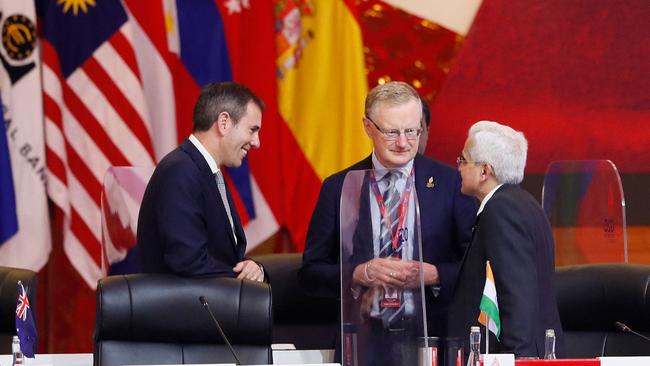
A three-person panel, which includes former senior Bank of Canada official Carolyn Wilkins, will lead the review. Treasurer Jim Chalmers has given the process wide-ranging terms of reference that imply little about the activities of the RBA will escape scrutiny.
There are some dangers here.
If the review is handled badly, or if outside political forces are marshaled in an effort to encourage populist ideas, the next year could be a torrid time for RBA governor Philip Lowe and the central bank he leads.
At stake is the policy independence of the RBA, which could come under threat as interest rates rise quickly over the next year just as the entrails of the central bank are being publicly dissected in the town square.
The mob gathering in the square is already more than a little hostile given guidance from the RBA in late 2021 that interest rates probably wouldn’t rise until 2024. That position is long gone now, with 125 basis points of hikes delivered between May 3 and July 5. Further increases are coming.
New entrants to the property market are angry at the RBA. They argue they were enticed into taking on big mortgage debts just at the moment the cost of borrowing for housing started skyrocketing.
Australia and New Zealand Banking Group forecast Tuesday that the RBA will need to take the official cash rate beyond 3 per cent by the end of this year to get on top of inflation.
Such a jump in the cash rate could cripple house prices, a double disaster for those newcomers to the country’s very expensive property market.
For those still struggling to believe that the RBA will indeed be raising interest rate at speed through the second half of this year, things are about to be put beyond doubt.
Second-quarter inflation data on July 27 are set to show the fastest pace of consumer-price gains in three decades. The RBA could well deliver a 75 basis-point increase in its official cash rate in August as a result, the biggest single interest-rate rise since 1994.
Some economists are even tossing about the idea that interest rates could rise by 100 basis points next month as the RBA keeps pace with peers like the Bank of Canada. It’s more than possible the US Federal Reserve will soon do the same given inflation in the world’s biggest economy is at its highest since 1981.
It could get more frightening for the more than one million Australian households that have never experienced an interest-rate tightening cycle. The number that have never experienced the aggressive nature of the current cycle is much, much higher.
So, it might be naive to think the review of the RBA will escape being politicised as soaring household debt, surging interest rates and tumbling house prices prompt an outcry from alarmed voters.
Consumer confidence is already plumbing lows last seen amid the anxiety fuelled by the emergence of pandemic-related lockdowns in early 2020. The reasons for that are rising living costs and the prospect of much higher interest rates.
RBA Deputy Gov. Michele Bullock said Tuesday in a speech that based on the assumption that the official cash rate rises by 300 basis points, just under 30 per cent of all mortgage borrowers will face repayment increases of more than 40 per cent of their current payments.
Add the jump in mortgage borrowing costs to existing pain from elevated prices for fuel, rents, housing construction and education, and political pressure to change the way the RBA operates could well up.
It’s an environment ripe for both the political fringe and mainstream to raise up their voices for change.
Calls to make house prices a direct part of the RBA’s policy mandate are possible, while others may demand the inflation target be changed. After all, raising the target from the current 2 per cent to 3 per cent would take some pressure off interest rates.
It’s an uncertain world, and the review of the RBA, which is taking public submissions and will canvass widely, could take some unexpected turns.
The Wall Street Journal




The first internal review of the Reserve Bank of Australia since the 1990s comes at the worst time imaginable for the central bank, which is trying to put out fires on a number of economic fronts while facing a barrage of criticism for what many consider to be recent policy mistakes.